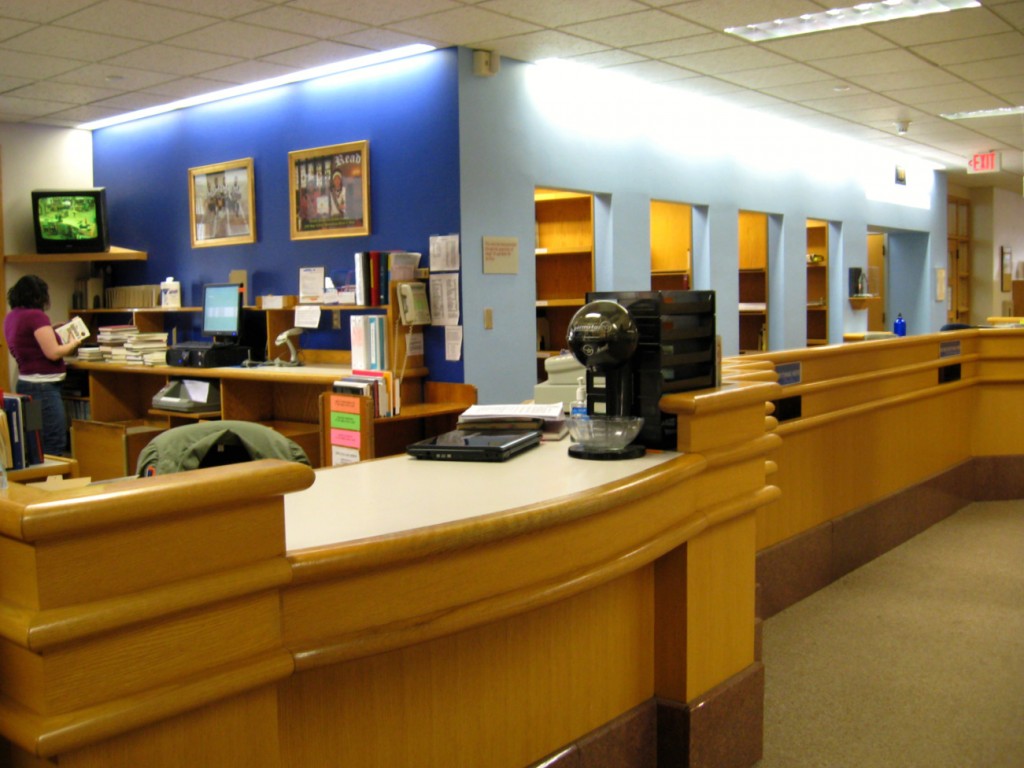The main function of a library is to provide its patrons with access to resources, and every department in the library, whether it be interlibrary loan, reference, the music library, technical services, media services, or the TechLab is designed to do just that. Circulation, another integral area of the library, also plays an important role in getting information to patrons.
“Anybody that comes to the library wants information,” Carla Kaminski, supervisor of circulation and Cup & Chaucer, said. “(Circulation) is the hub that brings all that together.”
Circulation plays a large role in accessing information beyond the library’s walls. Materials from both Van Wylen’s collection and other libraries’ collections that have come to Hope through Interlibrary Loan or MeL are checked in and out at the circulation desk.
Circulation, along with interlibrary loan, the music library, media services, and the TechLab, all fall under the category of access services. These individual departments all have the same goal: providing materials to patrons, whether that be physical materials such as books or electronic materials such as software.
Dave O’Brien is the head of access services for Van Wylen and has served in that position for the past two years after spending 17 years as a reference librarian. He became interested in library work while he was a student worker at Penn State University. After completing his undergrad, he went on to the University of Georgia to pursue a master’s degree. While there, he worked in the science library and for the USDA interlibrary loan office. After deciding that he would like to pursue a career as a librarian, he went to the University of Illinois, where he had an assistantship in the engineering library before coming to Hope College. Much has changed in the library world since O’Brien began his career as a librarian, but for him that is one of the best parts about the field.
“I really like how much things have changed in the last 10 years,” O’Brien said. “This has just been a great time to be a librarian going from print indexes when I first came here to everything that’s available now.”
The ever-changing nature of library work is something Kaminski also enjoys about the job.
“Library science is ever dynamic,” Kaminski said. “It’s always growing. There are always new things to consider, new information, new formats information is available in. We have to stay on top of what’s available in technology and find out how patrons want their information.”
If you have comments for how the library could improve, O’Brien recommends making use of the suggestion box located on the reference desk or the electronic version available through HopeCat.
“I encourage students to make whatever suggestions they feel are appropriate,” O’Brien said. “We really do read them.”
— Bethany Stripp, Library Student Blogger

